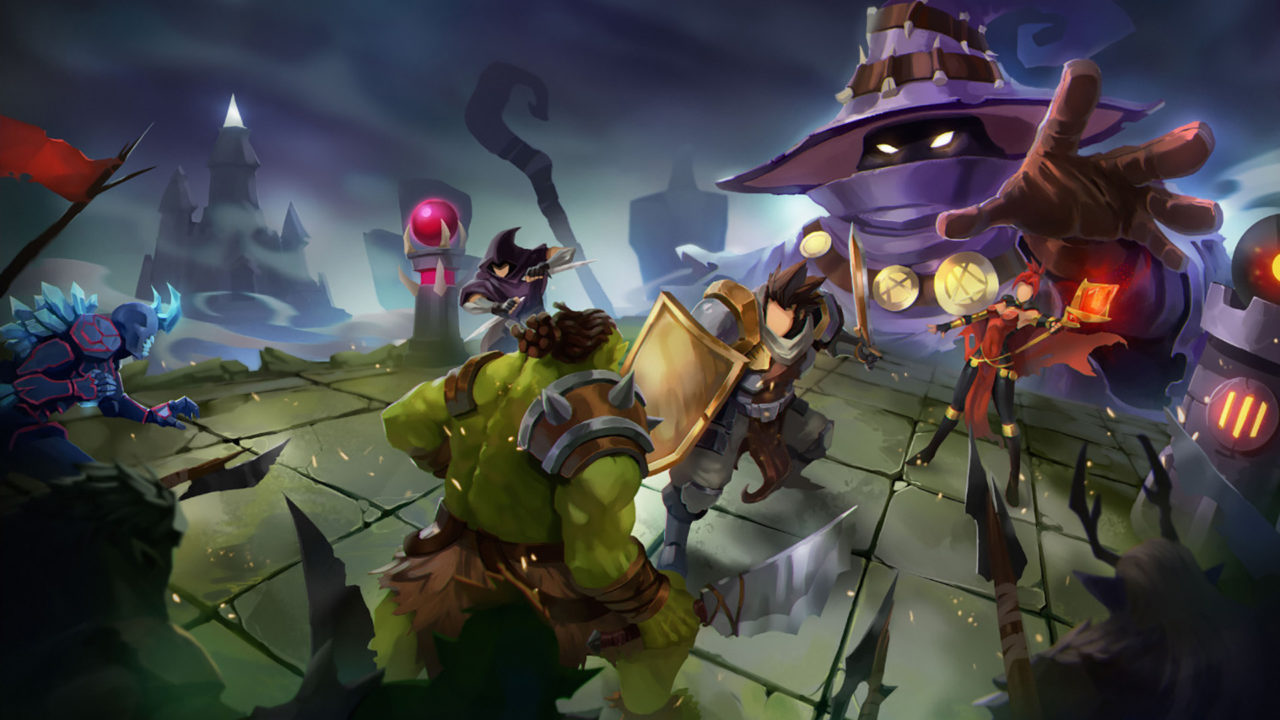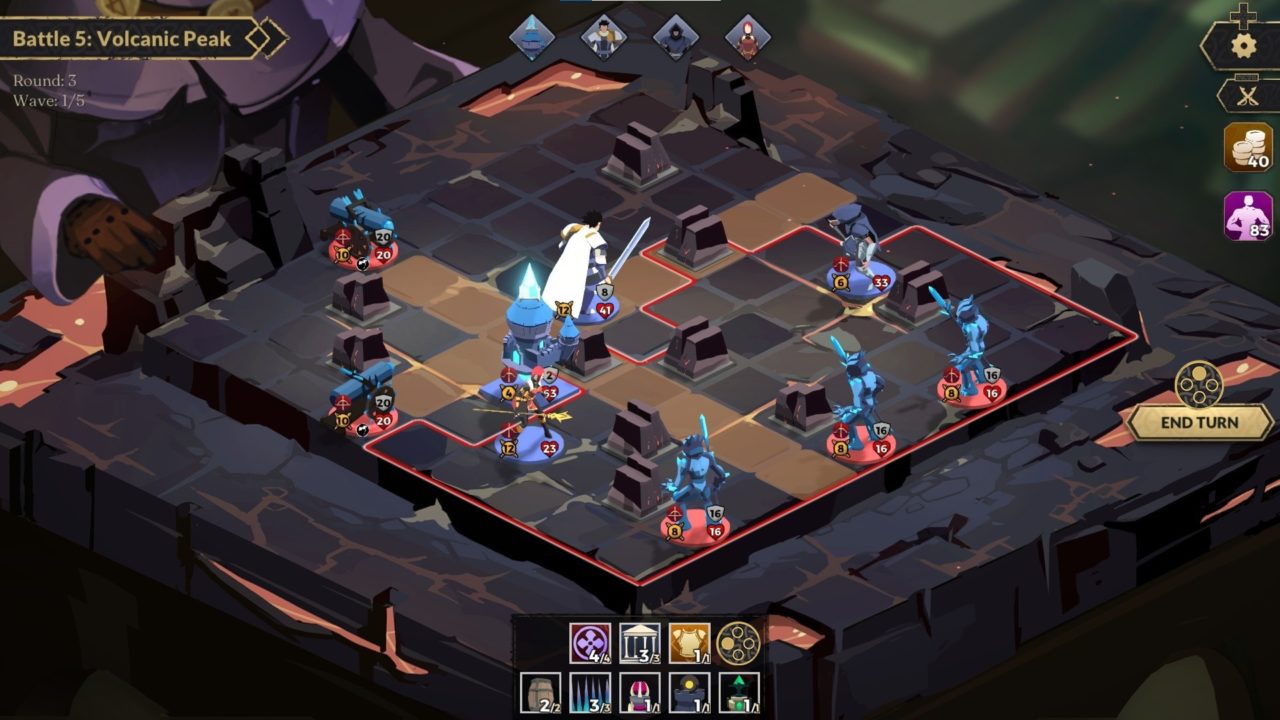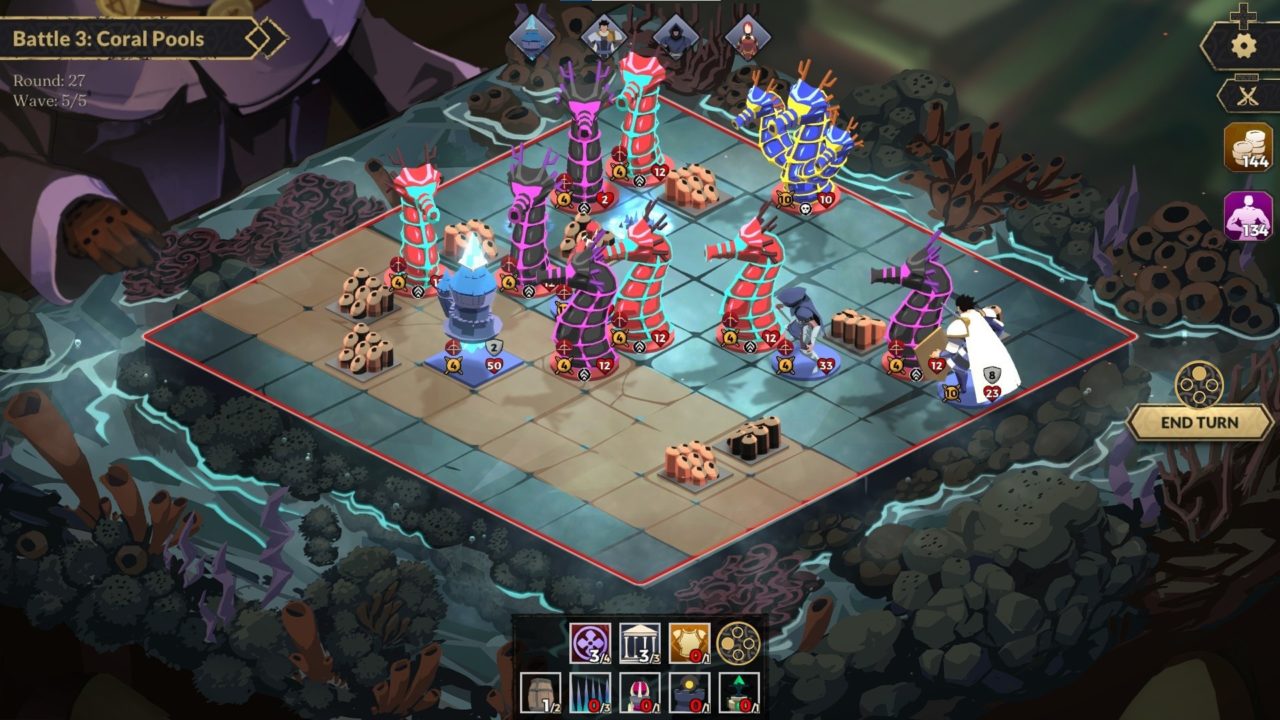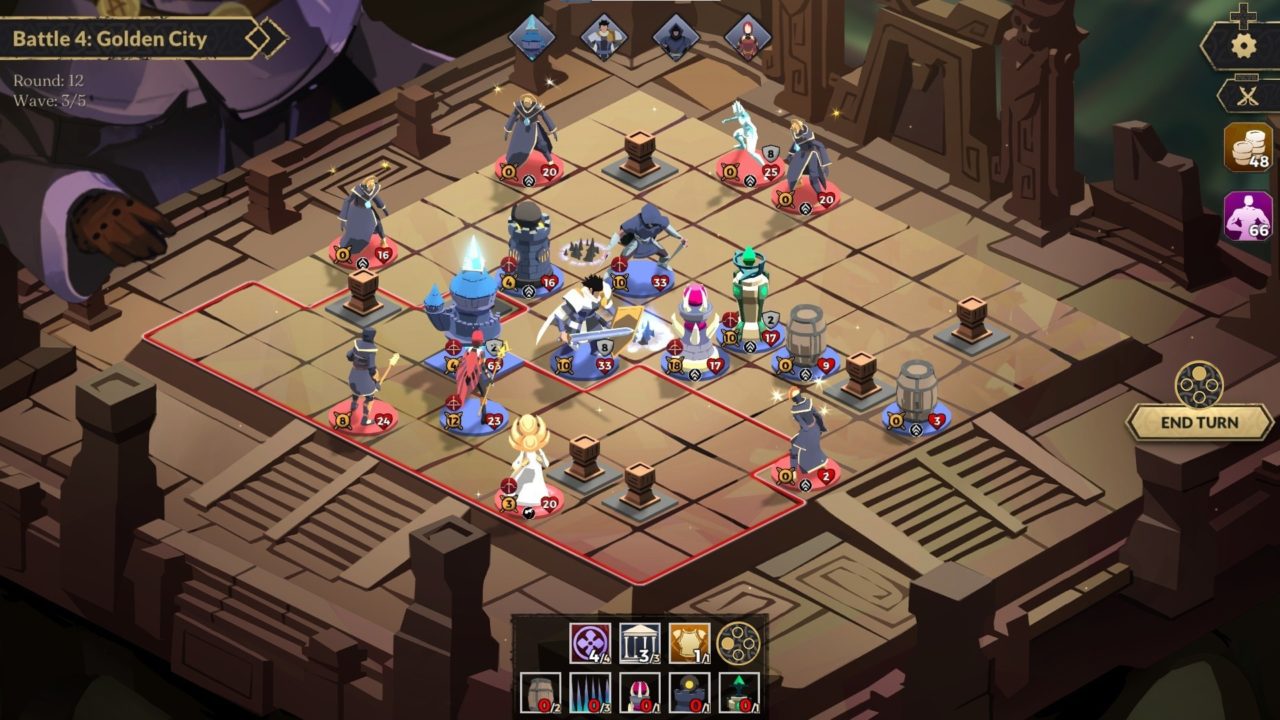How about a nice game of (procedurally generated rogue-like) chess?
Another game, another chance to ask “Who’s the tank?” Defend the Rook looks like a mélange of game types—a scoop of rogue-like, a handful of tower defense, a dash of RPG, and there you have it. The game is a port from an established PC title, and the developers did a good job with the Switch version.
Let’s start with the whole graphics/audio/gameplay stuff, shall we? The visuals are a bit cartoonish, but well rendered. The game looks good in handheld mode and on the TV/larger screen when docked. The elements which need to stand out and hold the player’s focus get a better level of detail, and the background elements are kept to a more subtle visual level.
The soundscape is not quite as well done as the visuals, but I found it easy to ignore. In other words, it does its job of setting the mood without overshadowing the gameplay. Defend the Rook also avoided the audio faux pas of either having lame dialogue reading or simple mumbles (which can get very irritating). To convey the details of the backstory (as well as some bad guy trash-talk) you get subtitles and a picture of the person delivering the dialogue. This has the added benefit of letting the player take in the story at their own pace. A lot of games with spoken story elements will deliver the dialogue and be done with it. This means you can’t go back and replay a bit of dialogue you missed because a word was unclear, the player got distracted, or there was some random background noise like the dryer buzzer going off, a foghorn, or maybe Wile E. Coyote playing with his latest acquisition from ACME. (One of these happens to me on a regular basis – I’ll leave it to you to guess which one.)
At the start of the game, you get the usual tutorial to familiarize you with the basics of moving around the board, selecting a target, and so on. What it mysteriously leaves out is that the Rook you are so keen on defending is a unit which can move and attack as well. The tutorial is also a bit weak in the area of the upgrade process, especially the contraptions (additional defensive towers, buffs, etc.). There are skill trees for the heroes and for the contraptions. These are straightforward enough, but the detail bubble has a bad habit of covering the unit you’re looking at. This is a minor inconvenience; the rest of the process is easy to use.
Speaking of upgrades, you will need three types of loot to buy them: gold, skill points, and gems. As you win battles, you gain gold and skill points readily enough. The gems are a bit harder to come by. It is no surprise that the best improvements can only be purchased using gems, so get used to replaying rounds to get enough of the common buffs to be in a position to get the really good toys.
While we’re on the subject of replaying and upgrading, let’s revisit those contraptions. There are things like ice traps which trigger damage when the enemy steps into their square, long range towers which deal a little damage, short range towers which deal higher damage, and temporary shields for all of your team. The game lets the player customize which buffs you want in the contraption assortment. Using gold to upgrade them is important. Equally important is using what you have in your contraption deck. Each option will show you how many times you can use it during a level. If you have three of something, you can play them at any point (during your turn) in the level. The contraptions, like the heroes, have a health/hit point count so the enemy can destroy your defense tower. Once a contraption is destroyed, it’s gone for the duration of the level. Once you start a new level, the contraptions reset. Use these well right from the start; they become especially handy when you face the boss round.
One criticism I will level is that the game could use a control for the camera angle; sometimes it feels a bit more like playing Where’s Waldo. Can you spot the Sorceress in the screenshot below?
She is alive and on the board. No? Follow the little red arrow – she’s hiding among three of the seahorses. You can just see the corner of her stats icon. If we could turn the board view even 90 degrees, she would be easy to spot so the player can take in the situation a little more readily.
Defend the Rook is a good strategy/tactics game with procedurally generated levels. The field of combat looks like a chess board, but it is 9 x 9. The board is populated with your heroes, the Rook, and some barricades (squares through which you can’t pass, but neither can the enemy).
Before each round starts, the game will show you some of the entry points the enemy will use so you can best position your team and set up any contraptions you have. The game takes turns: first, you get to go (one hero at a time), then the enemy goes (one NPC at a time). If one of your heroes dies during a round, the game will let you revive that hero at the end of the round. The catch is twofold—you can only get back one hero (if you lost two, tough noogies; you still only get one back), and the hero you bring back only gets 4 health (so they can die faster next round).
While the litany of upgrades, buffs, and improvements is a bit on the long side, the level/round replay isn’t so bad. Since each enemy type follows different rules for going after your team (go for the closest vs. go for the most distant vs. go for the rook, etc.), the way you move around will provide a unique playthrough each time. Some of the dialogue is a bit cheesy, and the “Magister” looks a bit like the odd little critter in purple from He-Man, but the game is actually pretty good. There is good value for the money in replayability.
Review: Defend the Rook (Nintendo Switch)
Very Good
Defend the Rook is a rogue-like tactics game that’s challenging enough to make you earn your victories while keeping you ready to try again when it beats you. If you like strategy games, this entry is worth adding to your Switch library.






